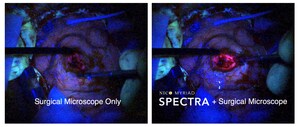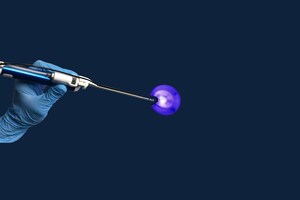Subcortical Surgery Group Formed to Advance New Approaches in Brain Surgery
More than 70 surgeons attend first annual meeting to learn and discuss new technologies in neurosurgery
PARK CITY, Utah, Aug. 15, 2014 /PRNewswire/ -- More than 70 neurosurgeons from hospitals and academic centers across the country are attending the first annual meeting of the Subcortical Surgery Group, formed this year by 7 neurosurgeons using a new approach to address glioblastoma multiforme (GBMs), brain metastasis (METS), and intracerebral hematomas (ICHs). The new approach, called the 6 Pillar Approach, is beginning to see wider market adoption and integrates the most advanced imaging and intervention technologies available to enable safe access to the tumor or stroke while preserving essential tissue and structures. More than 700 cases have been performed using this approach, with results indicating improved clinical and economic outcomes.
"This is a dynamic time in neurosurgery where we are seeing some welcome changes in technology and approaches to how we can improve surgery and achieve better patient outcomes," said Julian Bailes, MD, chairman of Neurosurgery, NorthShore University Health System, and President of the Subcortical Surgery Group. "The Subcortical Surgery Group members are among some of the early adopters of new technology. We are forging on what is possibly the final frontier of minimally invasive surgery in the body, and in this case, safely reaching abnormalities in the brain's subcortical space."
Founding members of the Subcortical Surgery Group include: Dr. Bailes; J.D. Day, MD, professor and Chair, Department of Neurosurgery, University of Arkansas for Medical Sciences; Amin Kassam, MD, Vice President of Neurosciences, Aurora Health Care; Gavin Britz, MD, Professor and Chair, Department of Neurological Surgery, Houston Methodist Hospital; Gary Gallia, MD, PhD, assistant professor of Neurosurgery and Oncology and Director of the Neurosurgery Skull Base Center, Johns Hopkins Hospital; Richard Rovin, FACS, MD, Medical Director of the Upper Michigan Brain Tumor Center, Marquette General Hospital; and Ronald Young, MD, Chief of Pediatric Neurosurgery, St. Vincent Hospital, Indianapolis.
Among the new technologies featured at the meeting are the NICO BrainPath® device that creates safe access to hard to reach or once-inoperable brain abnormalities using a path that runs parallel to the brain fiber tracts versus cutting through and damaging fibers, and the BrightMatter™ trajectory planning technology by Synaptive Medical that enables pre-operative planning with 3D rendering and real-time imaging.
"We are striving for eloquence and precision, and these technologies open up a new category of patient care that we would not have been able to provide before," said J.D. Day, Professor and Chair of the Department of Neurosurgery at the University of Arkansas for Medical Sciences and member of the Subcortical Surgery Group. "It's exciting to be on the forefront, but we can't do it without new and emerging technology."
The group's mission is to optimize minimally invasive surgical corridors to the brain's subcortical or deeper spaces through clinical and scientific collaborative research that will help set the standards for safe and effective treatment of brain tumors and hemorrhagic stroke.
Dr. Bailes describes the role of a neurosurgeon today as similar to a pilot in the cockpit with two screens and all the information at his fingertips.
"With next generation visualization, we know where the brain's critical structure fibers are located as we never knew before. These new technologies are allowing us to improve on the delivery of patient care because we can see more, we have access to areas that have previously been out of bounds, we have tools to remove abnormalities that are precise and safe for the patient, and we will have the ability to harvest tissue that allows us to provide very personal post-operative treatments," Dr. Bailes said.
The Subcortical Surgery Group will launch its website, www.SubcorticalSurgery.com, in early September. The site will feature a patient portal containing patient video stories on successful surgeries using these new technologies, current research and news, and physician locator capabilities that allow patients to find BrainPath trained surgeons in their area. Surgeons will have a secure page requiring login information where they can share patient cases and scans as a means to learn or seek advice from fellow surgeons on particular case approaches. The site will also be a repository for technology and clinical research information.
"We were very impressed with the interest and commitment of these 70 neurosurgeons to changing the path in the future of neurosurgery," Dr. Bailes said. "As surgeons, we continuously strive to improve our clinical results that result from the way we perform surgery. When we leave this meeting, I think there will be a renewed sense of urgency, collaboration and passion in the critical work we do to save and improve our patients' lives."
To learn more about the Subcortical Surgery Group, visit the SSG website in early September.
Contact: Sue Goin
[email protected]
(317) 402-8690
Logo - http://photos.prnewswire.com/prnh/20140815/136688
SOURCE NICO Corporation
WANT YOUR COMPANY'S NEWS FEATURED ON PRNEWSWIRE.COM?
Newsrooms &
Influencers
Digital Media
Outlets
Journalists
Opted In






Share this article